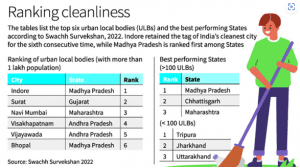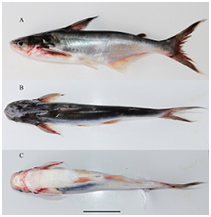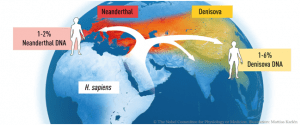THE ENVIRONMENT, ECOLOGY AND CLIMATE CHANGE
1. HOW CAN INDIA REDUCE ITS IMPACT ON GLOBAL WARMING
THE CONTEXT: Recently, the U.S. Environmental Protection Agency (EPA) has pointed out that since the industrial revolution, human activities have released large amounts of carbon dioxide (CO2).
THE EXPLANATION:
Alarming Increase in Carbon Dioxide:
• Atmospheric carbon dioxide levels have increased by over 40%, from 280 ppm in the 18th century to 414 ppm in 2020, and greenhouse gases level by over these 200 years.
• Reason: Due to fuel burning and other ‘greenhouse gases’ such as methane, nitrous oxide, and compounds of sulphur, phosphorous, ozone into the atmosphere, changing the earth’s climate.
India Specific Observations:
• Rise in Greenhouse gases: The industrial revolution started only after India’s Independence 75 years ago which has led to a rise in atmospheric carbon dioxide and greenhouse gases.
• Need to Reduce Carbon Footprint in Farming Sector: India has a total food-grain production of 275 million tonnes. India is the second largest producer of rice, wheat, sugarcane, cotton and groundnuts. It, thus, becomes important that India try and reduce its carbon footprint as much as possible, more in its farming sector.
Innovative Initiatives in Agriculture to Reduce Global Warming
• Farmers are using solar panels in their fields, so that they can avoid diesel for groundwater pumps.
• Climate-friendly agriculture offers new income sources and is more sustainable and India’s carbon emissions could drop by 45-62 million tonnes annually.
• India has about 20-39% vegetarians and 70% of the population eat meat — mainly chicken, mutton and fish. India, with its many rivers, has a vast coastline which is rich in fishes and fishes have high nutritional value and help in reducing carbon footprint.
India’s Efforts
Updated Nationally Determined Contributions (NDCs):
• India now stands committed to reducing the emissions intensity of its GDP by 45 percent by 2030 from its 2005 levels, as per the updated NDC.
• The country will also target about 50 percent of cumulative electric power installed capacity from non-fossil fuel-based energy resources by 2030.
• To create an additional (cumulative) carbon sink of 2.5-3 gigatonnes of carbon dioxide equivalent (GtCO2e) by 2030 through additional forest and tree cover.
• To further a healthy and sustainable lifestyle, ‘LIFE’ ‘Lifestyle for Environment’ as a key to combating climate change” has been added to India’s NDC.
• The update is also a step towards achieving India’s long term goal of reaching net-zero by 2070.
Adaptation and Mitigation:
• The Government has launched many schemes and programs to scale up India’s actions on both adaptation and mitigation.
• Appropriate measures are being taken under these schemes and programs across many sectors, including water, agriculture, forest, energy and enterprise, sustainable mobility and housing, waste management, circular economy and resource efficiency, etc.
• As a result of the aforesaid measures, India has progressively continued decoupling of economic growth from greenhouse gas emissions.
Focus on Renewable Energy:
• The PM has set the targets and reiterated that the Indian government is committed to increasing the share of renewable energy in India’s total energy share. Initially, the target for renewable energy was set at 175 GW, but now it has been further revised to 450 GW by 2030.
• It will lead to an overall increase in green jobs such as in renewable energy, clean energy industries- in automotives, manufacturing of low emissions products like Electric Vehicles and super-efficient appliances, and innovative technologies such as green hydrogen, etc.
Mobilisation of Resources:
• India is earmarking a large part of its developmental resources to the fight against climate change.
• This is a stupendous effort as compared to the western countries, which are already at the advanced stages of development.
International Solar Alliance (ISA):
• ISA is a global alliance being initiated by India as well as headquartered in India. It is aimed at promoting research to develop more efficient, low-cost solutions to the global energy requirements, by leveraging advanced technology as well as providing incentives and regulation.
THE ECONOMIC DEVELOPMENT
2. INDIA’S ECONOMY TO GROW 5.7% IN 2022, 4.7% IN 2023: UNCTAD
THE CONTEXT: The United Nations Conference on Trade and Development (UNCTAD) expects India’s economy to grow 5.7% in 2022 and 4.7% in 2023. India’s gross domestic product (GDP) grew 8.7% in FY22.
THE EXPLANATION:
• The UN report expects the world economy to grow 2.6% in 2022. This is 0.9 percentage points below last year’s projected rate. The growth is expected to further decelerate in 2023 to 2.2%. This would leave the real GDP below the pre-pandemic levels by the end of 2023.
• It warns that the rapidly increasing interest rates and fiscal tightening in the advanced economies, along with the Russia-Ukraine War, have already exacerbated the global slowdown into a global economic downturn.
• The advanced economies’ monetary and fiscal policies risk triggering a global recession and prolonging stagnation. This could lead to a situation worse than the 2008 financial crisis and the 2020 COVID-19 induced shock.
• The report holds that attempting to curb inflation by increasing interest rates is an impudent gamble and would lead to a recession.
• Excessive monetary tightening, especially given the current situation of declining real wages, financial turbulence and insufficient support and coordination from multilateral forum, could lead to stagnation and instability in many developing economies as well as some developed ones.
• The report expects the Indian economy, the largest in the region, to grow 5.7% in 2022 and 4.7% in 2023. In FY22, the country’s GDP grew 8.7%.
• The country’s economic activity is being affected by weaker public expenditure and higher financing costs, according to the 2022 report. While the government plans to boost capex, especially in the road and rail sectors, the weakening global economy will put pressure on the policymakers to reduce the fiscal imbalances. This would reduce expenditure elsewhere.
ABOUT:
United Nations Conference on Trade and Development (UNCTAD)
The Geneva-based UN body has been releasing this report since 1981 to provide analysis the major current economic trends and policy issues of global concern. It provides recommendations to boost the global economy so that lives of people are improved and the future of the planet is secure.
THE SECURITY AFFAIRS
3. INDIGENOUSLY DESIGNED AND DEVELOPED LCH INDUCTED INTO INDIAN AIR FORCE
THE CONTEXT: In a big boost to Aatmanirbhartha in Defence, Raksha Mantri presided over the formal induction of Light Combat Helicopter (LCH), designed and developed by Hindustan Aeronautics Limited (HAL), into the Indian Air Force (IAF) in Jodhpur.
THE EXPLANATION:
Naming LCH as “Prachanda”, Raksha Mantri said that its induction comes during the Amrit kal when the Nation is celebrating Azadi ka Amrit Mahotsav and a pointer to the future when IAF will be the top most force in the world, as also making the country fully AatmaNirbhar in Defence production requirements. Raksha Mantri also took a sortie onboard the LCH shortly after its induction into IAF.
• The LCH was developed after around 20 years of research and development post Kargil War. The name Prachand means “fierce”. It was designed and developed by the state-owned defence company Hindustan Aeronautics Limited (HAL).
• The indigenous content in LSP version of the helicopter accounts for the 45 per cent of the cost, which is expected to raise to more than 55 per cent in the production version of the series.
FEATURES:
• This indigenously developed 5.5 tonne class combat helicopter is equipped with numerous stealth features, armoured protection, night attack capability and landing gear capable of survival.
• It has extended range and high-altitude performance capability as well as the round-the-clock, all-weather combat capability. It is capable of neutralizing adversary air defence, conducting counter-insurgency operations and combat search and rescue (CSAR) operations. It is useful for conducting high-altitude bunker busting operations and counter-insurgency operations in jungle and urban terrains.
• It can also be used for countering slow-moving aircraft and remotely operated aircrafts. This helicopter can also provide assistance to ground forces during combat situations.
• Presently, the Indian Armed Forces is expected to require a total of 160 LCHs, of which 65 is for IAF and 95 is for the Indian Army. The HAL has now created a strategy to achieve the peak rate production capacity of 30 helicopters per annum to manufacture the remaining 145 of these combat helicopters in 8 years from the date of inking the series production order.
THE GOVERNMENT SCHEMES AND INITIATIVES IN NEWS
4. SWACHH SURVEKSHAN AWARDS 2022
THE CONTEXT: Indore has been adjudged the cleanest city of India for the sixth year in a row, while Madhya Pradesh is the cleanest state in the country. Surat is the second cleanest city and Navi Mumbai comes a close third in the category of cities with a population more than a lakh.
THE EXPLANATION:
• In the population category of less than one lakh, Panchgani and Karad from Maharashtra bagged the first and third positions respectively, while Patan from Chhattisgarh bagged the second position.
• Tirupati received the best city award in Safai Mitra Suraksha category, while Haridwar in Uttarakhand received the award for the best Ganga town in more than one lakh population cities. Shivamogga in Karnataka received the fast mover city award.
• The State awards saw Madhya Pradesh emerge as the Cleanest State in the category of “more than 100 Urban Local Bodies”, relegating Chhattisgarh, the cleanest State of the previous three years, to second place. Maharashtra emerged as third cleanest State.
• Similarly, Tripura got the cleanest State award in the “less than 100 urban local bodies category”, dislodging Jharkhand, which had won in the past two consecutive years. Jharkhand and Uttarakhand received the second and third spots respectively.

VALUE ADDITION:
Swachh Survekshan:
• Swachh Survekshan, conducted by MoHUA since 2016, is the world’s largest urban sanitation and cleanliness survey.
o It is being conducted under the ambit of the Swachh Bharat Mission (Urban)2.0.
• It has been instrumental in fostering a spirit of healthy competition among towns and cities to improve their service delivery to citizens and towards creating cleaner cities.
• It aims to encourage cities to improve the status of urban sanitation while encouraging large scale citizen participation.
THE PRELIMS PERSPECTIVE
5. ICAR SCIENTISTS DISCOVER NEW FISH SPECIES IN METTUR DAM
THE CONTEXT: A new catfish species has been discovered in the river Cauvery near Mettur Dam.
THE EXPLANATION:
• The edible species has been named Pangasius icaria ( P. icaria) after the Indian Council of Agricultural Research that discovered the species. The species belongs to the Pangasius genus.
• The genus Pangasius is found in the Gangetic plains but not in peninsular India.
• Through this study, they found that Pangasius specimens from the river Cauvery are different from other species of the genus Pangasius.
• The new species is edible and the locals call it keluthi in Tamil.
• Catfish has high commercial value in aquaculture and wild capture fisheries.
THE MISCELLANEOUS
6. MEDICINE NOBEL GOES TO SWEDISH SCIENTIST SVANTE PÄÄBO FOR SEQUENCING NEANDERTHAL GENOME
THE CONTEXT: Swedish scientist Svante Pääbo has been awarded the Nobel Prize for Physiology for the year 2022 “for his discoveries concerning the genomes of extinct hominins and human evolution.”
THE EXPLANATION:
• Through his pioneering research, Svante Pääbo – this year’s #NobelPrize laureate in physiology or medicine – accomplished something seemingly impossible: sequencing the genome of the Neanderthal, an extinct relative of present-day humans.
accomplished something seemingly impossible: sequencing the genome of the Neanderthal, an extinct relative of present-day humans.
• “Through his groundbreaking research, Svante Pääbo established an entirely new scientific discipline, paleogenomics. Following the initial discoveries, his group has completed analyses of several additional genome sequences from extinct hominins. Pääbo’s discoveries have established a unique resource, which is utilized extensively by the scientific community to better understand human evolution and migration.
• New powerful methods for sequence analysis indicate that archaic hominins may also have mixed with Homo sapiens in Africa. However, no genomes from extinct hominins in Africa have yet been sequenced due to accelerated degradation of archaic DNA in tropical climates.


